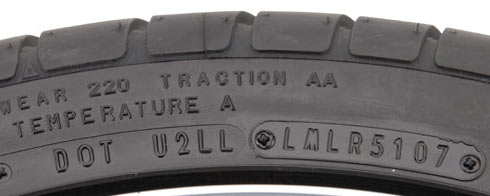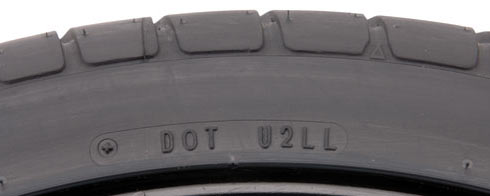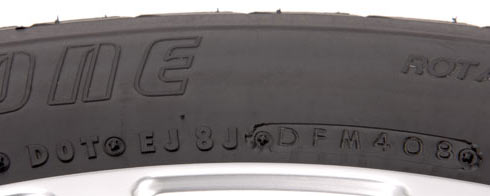We recently visited Discount Tire for an inflation check and to find out the cost of replacing a tire we recently had punctured. The tech pointed out that the tire was over ten years old and that we should verify the age of the remaining tires on our RV. Our tires have plenty of tread left and the spare we put on had never been used. That is not that uncommon on RV's because most spend so much time sitting. With that in mind here is an article on how to determine the age of your tires-RV tires should be replaced after a maximum of six years.
When it comes to determining the age of a tire, it is easy to identify when a tire was manufactured by reading its Tire Identification Number (often referred to as the tire’s serial number). Unlike vehicle identification numbers (VINs) and the serial numbers used on many other consumer goods (which identify one specific item), Tire Identification Numbers are really batch codes that identify the week and year the tire was produced.
The U.S. Department of Transportation (DOT) National Highway Traffic Safety Administration (NHTSA) requires that Tire Identification Numbers be a combination of the letters DOT, followed by ten, eleven or twelve letters and/or numbers that identify the manufacturing location, tire size and manufacturer's code, along with the week and year the tire was manufactured.
Tires Manufactured Since 2000 Since 2000, the week and year the tire was produced has been provided by the last four digits of the Tire Identification Number with the 2 digits being used to identify the week immediately preceding the 2 digits used to identify the year.
Since 2000, the week and year the tire was produced has been provided by the last four digits of the Tire Identification Number with the 2 digits being used to identify the week immediately preceding the 2 digits used to identify the year.Example of a tire manufactured since 2000 with the current Tire Identification Number format:
| In the example above: DOT U2LL LMLR 5107 | |
| DOT U2LL LMLR 5107 | Manufactured during the 51st week of the year |
| DOT U2LL LMLR 5107 | Manufactured during 2007 |

The use of a partial Tire Identification Number on the one sidewall (shown above) reduces the risk of injury to the mold technician that would have to install the weekly date code on the top sidewall portion of a hot tire mold.
Tires Manufactured Before 2000
The Tire Identification Number for tires produced prior to 2000 was based on the assumption that tires would not be in service for ten years. While they were required to provide the same information as today’s tires, the week and year the tire was produced was contained in the last three digits. The 2 digits used to identify the week a tire was manufactured immediately preceded a single digit used to identify the year.
Example of a tire manufactured before 2000 with the earlier Tire Identification Number format:

| In the example above: DOT EJ8J DFM 408 | |
| DOT EJ8J DFM 408 | Manufactured during the 40th week of the year |
| DOT EJ8J DFM 408 | Manufactured during the 8th year of the decade |
While the previous Tire Identification Number format identified that a tire was built in the 8th year of a decade, there was no universal identifier that confirmed which decade (tires produced in the 1990s may have a small triangle following the Tire Identification Number to identify the decade).
And finally, hold on to your sales receipt. Most tire manufacturer's warranties cover their tires for four years from the date of purchase or five years from the week the tires were manufactured. So if you purchase new tires that were manufactured exactly two years ago they will be covered for a total of six years (four years from the date of purchase) as long as you have your receipt. If you lose your receipt, your tires' warranty coverage will end five years from the week the tire was produced (resulting in the tire manufacturer's warranty coverage ending only three years from the date of purchase in this example).
No comments:
Post a Comment